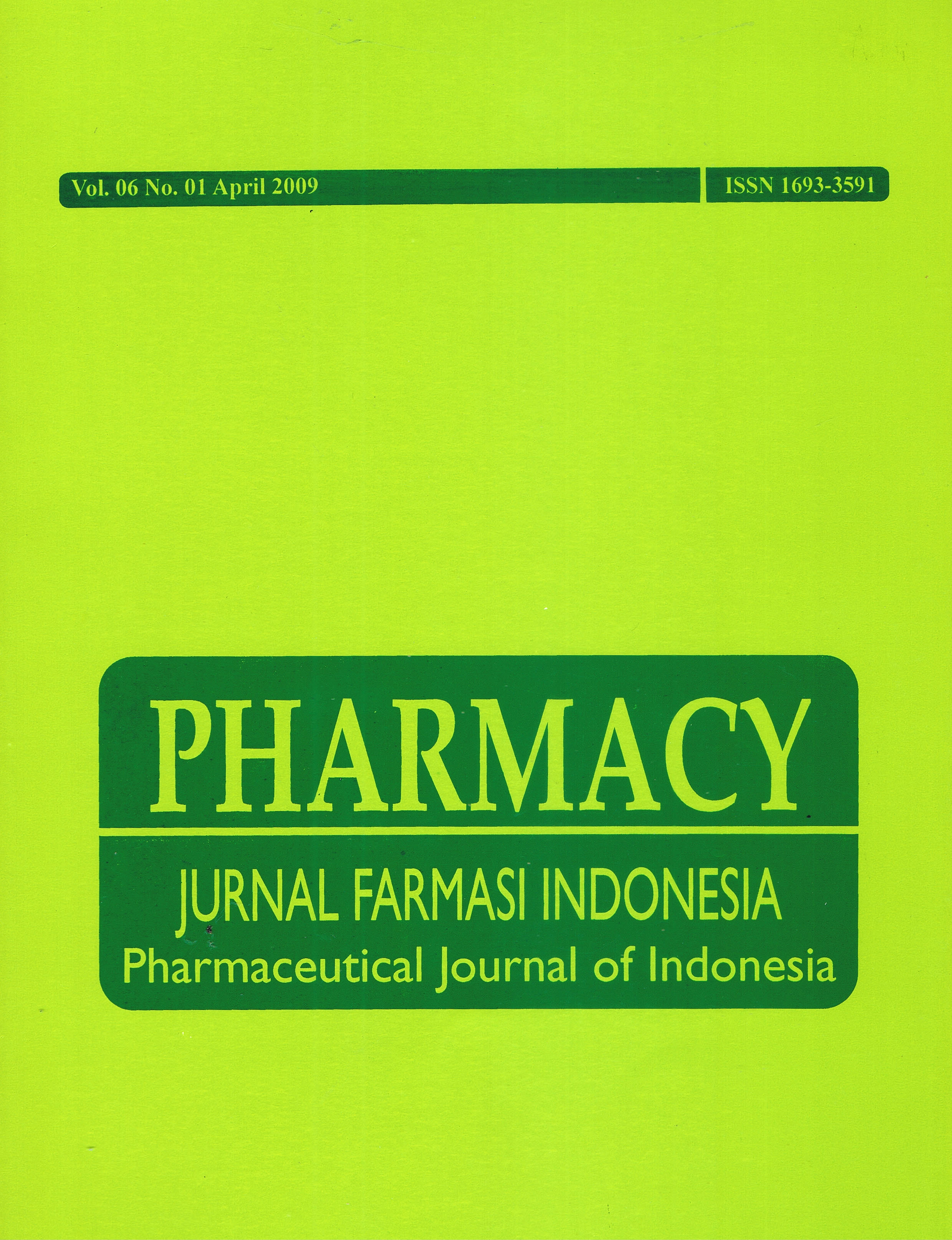ANALISIS ZAT WARNA TARTRAZIN PADA MINUMAN ORSON DENGAN METODE SPEKTROFOTOMETRI Ultraviolet-Visibel DI PASAR INDUK BREBES
DOI:
https://doi.org/10.30595/pharmacy.v6i01.406Abstract
Abstrak Tartrazin merupakan zat pewarna yang di klasifikasikan ke dalam certified colour artinya zat pewarna sintesis yang diizinkan penggunaannya sebagai bahan tambahan dalam makanan dan minuman. Tujuan dari penelitian ini adalah untuk mengetahui kadar zat warna tartrazin pada minuman orson. Identifikasi menggunakan KLT dengan fase gerak isopropanol:ammonia 25% (4:1) dan penetapan kadar dilakukan secara spektrofotometri. Hasil kromatografi lapis tipis menunjukan bahwa semua sampel mengandung tartrazin sedangkan hasil metode analisis yang dilakukan, diperoleh nilai KV pada uji presisi adalah 1,230% ( ≤ 2% ). Nilai persen perolehan kembali ( Recovery ) rata-rata pada uji akurasi adalah 91,74% ( 80-120% ). Linearitas ditunjukan dengan nilai koefisien korelasi ( r = 0,999 > r tabel ). Limit deteksi dan limit kuantitasi yang diperoleh dari penelitian ini sebesar 1,251 ppm dan 4,169 ppm. Dari hasil penelitian diperoleh kadar tartrazin dalam sampel A; B; C; dan D adalah 79, 445 ppm; 77, 325 ppm; 78, 267 ppm; 78, 56 ppm. Berdasarkan hasil kadar yang diperoleh menunjukan bahwa sampel yang mengandung pewarna tartrazin kadarnya tidak melebihi kadar yang telah ditentukan yaitu 100 ppm. Kata kunci: Kromatografi Lapis Tipis, Tartrazin, Spektrofotometri Ultraviolet- Visibel Abstract Tartrazin is a certified colouring agent which classified into certified colour means it is permitted for foods and bevereges. . The aim this research was to determine the existence of tartrazin in orson drink. Identification was carried out using thin layer chromatography (TLC) method white mobile phase isopropanol:ammonia 25% (4:1), while the assay was using spectrophotometry method. Thin layer chromatogrphy result showed that all samples contain tartrazin. The result of analysis method that coefficient of variation the presicion was 1,230% (<2%). The persent value of mean recovery at accuration test method were to 91,74% (80-120%). Liniaritas showed with coefficient of correlation value (r = 0,999 > r table). Limit of detection and limit of quntitation of this research was 1,251 ppm and 4,169 ppm It was found that concentration of tartrazine in samples A ; B ; C and D ; were 79,445; 77,325;78,267;78,56 respechvely. Based on the level which is producted shows that the sample which is contained tartrazine the level is not more than the standard 100 ppm Key words: Thin Layer Chromatography, Tartrazine, Spectrophotometry, Ultraviolet- VisibleReferences
Day, R. A dan A. L Underwood. Analisis Kuantitatif Kimia. Jakarta : Erlangga.
Harmita. 2004. Petunjuk validasi metode dan cara perhitungannya, majalah ilmu farmasi. Vol. 1, Nomor 3, P. 122.
Khopkar. S. M. 2003. Konsep Dasar Kimia analitik. Jakarta : UI Pres. P. 201-205.
Mulya & Suharman. 1995. Analisis Instrumental. Airlangga University press. P. 6.
Winarno, F. G & Sulistyowati, T. R. 1994. Bahan Tambahan untuk Makanan dan Kontaminan. Jakarta : Pustaka sinar harapan. P. 313.
Winarno, F, G 1997, Kimia Pangan dan Gizi . Jakarta : PT. Gramedia Pustaka Utama.P. 184 – 195.
Downloads
Published
2009-04-01
How to Cite
Rahayu, W. S., Tjiptasurasa, T., & Najilah, P. (2009). ANALISIS ZAT WARNA TARTRAZIN PADA MINUMAN ORSON DENGAN METODE SPEKTROFOTOMETRI Ultraviolet-Visibel DI PASAR INDUK BREBES. PHARMACY: Jurnal Farmasi Indonesia (Pharmaceutical Journal of Indonesia), 6(01). https://doi.org/10.30595/pharmacy.v6i01.406
Issue
Section
PHARMACY
License
Authors who publish with this journal agree to the following terms:
- Authors retain copyright and grant the journal right of first publication with the work simultaneously licensed under a Creative Commons Attribution 4.0 International License that allows others to share the work with an acknowledgement of the work's authorship and initial publication in this journal.
- Authors are able to enter into separate, additional contractual arrangements for the non-exclusive distribution of the journal's published version of the work (e.g., post it to an institutional repository or publish it in a book), with an acknowledgement of its initial publication in this journal.
- Authors are permitted and encouraged to post their work online (e.g., in institutional repositories or on their website) prior to and during the submission process, as it can lead to productive exchanges, as well as earlier and greater citation of published work (See The Effect of Open Access).






